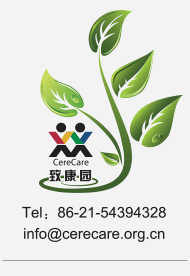
FAQ (Frequently Asked Questions)
1.What is cerebral palsy?
2.Is it correct that CP is equal to having low IQ?
3.Why is preschool the best rehab period for CP children?
4.Is it still useful to receive treatments after the best rehab period has passed?
5.What is the difference between rehabilitation at a hospital and at CereCare?
6.What tests and assessments do CereCare administer to the children upon enrollment?
7.What should parents do?
8.Can I be a volunteer? What do I need to do in order to become a volunteer at CereCare?
9.How should volunteers help the children walk?
10.How should volunteers pick up the children?
1.What is cerebral palsy?
● Cerebral Palsy Overview(click here)
2. Is it correct that CP is equal to having low IQ?
Cerebral Palsy (CP) is caused by damage to one or more specific areas of the brain usually occurring during fetal development, before, during or shortly after birth or during infancy. Faulty development or damage usually affects the brain’s ability to control adequate movement and posture, but it also affects intelligence in some children. Most CP children have the same or a small difference in IQ as normal people. Despite the similar intelligence, some of these children are misunderstood because their motor, posture, and language disabilities prevent them from effectively expressing themselves.
Besides Ms Sung Ling Lieu, the founder of CereCare, there are many extraordinary people with CP in the world who courageously live a wonderful life. One of them is the Irish writer and painter, Christy Brown, whose autobiography was later made into an Academy Award-winning movie titled “My Left Foot.” Many CP patients have accomplished extraordinary achievements even though they are diagnosed as intellectually disabled.
● Famous People with Cerebral Palsy Click here)
● The film “My Left Foot”(Click here)
3.Why is preschool the best rehab period for CP children?
The principle of CP rehab is “early discovery, early diagnosis, and early treatment.” The bones, joints, and muscles are not yet fixed, inflexible, and atrophic for preschool children. Although CP is caused by partial damage of the brain, the brain is unpredictable and malleable. Therefore, early intervention can significantly improve motor functions and development.
4.Is it still useful to receive treatments after the best rehab period has passed?
Yes. The founder of CereCare, Ms. Sun Ling Lieu, was not properly diagnosed with cerebral palsy until she was 18 and with hard work, she was able to walk by herself when she was 30. As CP patients grow older, it is very hard on their families and themselves if they cannot take care of themselves. Rehabilitation at any age, therefore, can improve their condition and prevent it from deteriorating. Rehabilitation is not only therapy, but also an attitude integral to the lives of CP patients.
● Our Founder’s Story (click here)
5.What is the difference between rehabilitation at a hospital and at CereCare?
On one hand, hospitals clearly separate their rehabilitation methods into categories such as physical therapy, occupational therapy, speech therapy, and sensory integrative therapy, and time is specifically set aside each day for rehabilitation.
CereCare, on the other hand, combines Ms. Lieu’s acupressure as well as conductive education. This way, we can focus on the child as a whole being and integrate the two methods so that every part of daily life is training for the children.
● Our Features (click here)
● Lyu’s Acupressure (click here)
● Conductive Education (click here)
6.What tests and assessments do CereCare administer to the children upon enrollment?
Upon enrollment, CereCare will give the child an initial assessment his/her gross and fine motor skills. After we get to know the child and the parents and analyze his/her medical records, we will make a decision on whether or not to accept the child. When the child has been enrolled for 3 months, we will do a comprehensive assessment and design a specific treatment plan based on the child’s situation.
● Admission Procedure (click here)
7.What should parents do?
Parents are the best and most important allies to CP therapists and medical personnel. They must work closely together to foster the best environment for CP children to succeed.
● A Letter to Parents (click here)
8.Can I be a volunteer? What do I need to do in order to become a volunteer at CereCare?
Yes, you can! Volunteers should be loving, relatively healthy, and optimistic. In addition, volunteers should be caring, persistent, determined, and confident.
This work is special and requires a great deal of persistence and commitment.
● Types of Volunteer Activities (click here)
● Volunteer Manual(click here)
● How To Become a Volunteer(click here)
● A Volunteer’s Reflection(click here)
9.How should volunteers help the children walk?
There are two ways that volunteers can help the children walk. The first is straight line walking, where a child is wearing corrective shoes, hands tied to a ladder-back frame. A volunteer stands next to both sides of the child and help him/her to practice walking using rhythmic intention (see: features of conductive education). The second is side walking, which is aimed at children with poor hips, and requires the volunteer to help hold the child’s hip in correct posture.
10.How should volunteers pick up the children?
The correct pick-up posture is very important. For the spastic CP children, since the side muscles on their thighs are tight, you can pick them up and let their legs wrap across your waist. If you’re picking them up from the side, make sure that their legs are together side by side. If you choose to pick them up and carry them in your arms, make sure their hands are together in front of them. For children who are older, you may need two people to pick them up together.



